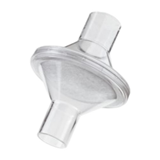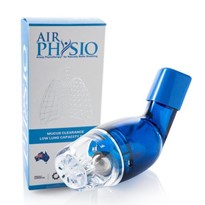Our lungs reach full maturity around 20-25 years old. Lung function is relative to age, race, gender and height.
This is why when you go for a spirometer test with your doctor, they ask a number of questions and all of these factors are taken into consideration when giving you your FEV1/FVC ratio as seen in Figure 2.
So what do the figures tell us and what does this mean for you as you age?
Figure 1 shows how much air we can breathe out in 1 second.
- Between the ages of 5 and 20 to 25 years old, this is low because our lungs are growing and developing to their full capacity of approximately 6 litres.
- Between the age of 20 to 35 years old, the lungs have reached fll maturity and FEV1 is at maximun levels for people without respiratory conditions.
- From the age of 40 to 45 years old our lungs start a progressive decline due to a number of conditions which will be talked about later in this article.
Figure 2 shows the ratio of FEV1(how much air we can breathe out in 1 second) in comparison to the FVC (Force Vital Capacity is how much air we can breathe out in total after taking the deepest of breath, usually around 5-7 seconds worth).
- Between the ages of 5 and 25 years old, the ratio of FEV1 and FVC is at its peak of between 85 to 90% because the amount of air being exhaled out in 1 second is approx. 5-95% of the total amount of air which can be exhaled in total.
- Between the age of 25 to 45 years old, the lung function ratio is still considered to be normal according to spirometry (greater than 80%).
- From the age of 45 years old and older, the lung function starts to decline and mild COPD starts to develop due to a progressive decline in respiratory conditions.
Why is it Harder to Breathe as We Get Older?
Main Issues with aging include the following:
- The support structure of the lungs involved in gas transfer (CO2 and O2 transfer) deteriorates, creating abnormal air-filled spaces in the lungs similar to emphysema and bronchiectasis.
- Respiratory muscle strength decreases with age which may impair effective cough, which is important for airway clearance of mucus and reducing the effectiveness of maintaining lung hygiene.
- Alveolar dead space increases with age, affecting arterial oxygen without impairing the carbon dioxide elimination.
- Elderly adults develop diminished ventilatory responses to conditions like shortness of breath, reducing the body’s natural mechanism to improve oxygen transfer to cells.
Reduced Support Structure of the Lungs
As we grow older, the tissues in our lungs start to deteriorate, taking longer to repair and start losing elastin and collagen, similar to our skin.
This can lead to a number of respiratory conditions as shown below, including but not limited to:
- Vascular Occusion and Ischemic Necrosis (Figure 3, number 1) – This is blood clotting and tissue death in the lungs, which can lead to reduced gas transfer from the airsacs.
- Dilatation of Bronchi (Figure 3, number 2) – An example of this is Bronchiectasis where the airway walls are permanently enlarged in certain areas, sometimes caused by the weakening of the airway walls, causing the mucus to build up and makes it harder to clear and leading to obstructions to breathing, poor lunghygiene and potential development of more frequent infections including pnemonia.
- Disruption of Elastic Fiber Network (Figure 3, number 3) – An example of this is emphysema, where the airsacs are required to expand and contract with each breath and loss of elasticity can result in the breakdown of the airsac structure due to lack of elastic fiber capability of the airsacs, reducing lung function and FVC.
- Remodeling of lung Architecture (Figure 3, number 4) – Similar to Disruption of Elastic Fiber Network, but it refers to the lungs inability to rapidly repair tissue damage and integrity, reducing lung function and FVC.
Respiratory Muscle Strength Decreases
Like our other muscles, as we get older, our muscles start to weaken and don’t function as effectively as they used to. A key muscle of the lungs is the diaphragm which not only helps us breathe in and out but also performs the important function of the productive cough (a cough where we are able to cough mucus up and out of the lungs to remove foreign particles from the body).
Without the strong breathing and productive cough, we can build up a mucus in the lungs, which may lead to obstructions to breathing, poor lung hygiene (including Air Trapping and Atelecatesis from mucus build-up) and potential development of more frequent infections including pnemonia.
Alveolar Dead Space Increases with Age
This is similar to points mentioned in point 1 - Reduced Support Structure of the Lungs, but it mainly affects the body’s ability to absorb oxygen into the blood stream for transportations to the cells, while not affecting the elimination of carbon dioxide from the body.
Diminished Ventilatory Responses to Conditions Like Shortness of Breath
The body has key receptors in the brain which help identify oxygen and carbondioxide levels in the blood, helping to identify when we are in a state of shortness of breath. These receptors take action by performing function like increasing our breathing volume when at rest, increasing our hemoglibin levels to increase the transport of O2 and CO2 to and from cells.
As we grow older, our body’s ability to monitor these states become diminished and we are unable to do these functions as efficiently as someone younger then ourselves. This may cause our tissues to become more starved of O2 and have too much CO2 making our body more acidic and potentially damaging our cells in high stress states.
What Can You Do To Help Your Lungs?
Some of these conditions can’t be changed, they are simply a process of getting older. Some things which can change include keeping as active as possible as this will help some of these conditions. A key component which will help a number of these processes is the use of Oscillating Positive Expiratory Pressure (OPEP) devices like AirPhysio.
AirPhysio is a mucus clearance and lung expansion device designed to assist in the body’s natural mucus clearance process and improving lung hygiene by performing 3 key functions:
- Wind sheering of the mucus – This is when the air rushes over the mucus and mobilises the top layer of mucus to be breathed or coughed out naturally, helping to reduce the amount/weigh of the mucus in the lungs,
- PEP – The device creates a Positive Expiratory Pressure (help inflate the lungs while breathing out) in the lungs, helping to open up the airways, getting in behind the mucus and helping to push the mucus up and out of the lungs,
- Oscillation – The device vibrates the walls of the airways in the lungs by inflating and deflating the airways at between 15 to 35 times per second, helping to shake the walls, improving the mobilisation of the mucus and helping to clear out the built-up congestion.
The device also helps to reduce trapped air in the lungs and remove mucus plugs, which may be caused by the cold or flu, expanding the lungs and assisting to restore maximum lung capacity. The device is designed to assist conditions like Emphysema, Bronchiectasis and Asthma which create obstructions in the airways and can lead to air trapping and collapsed lungs.
References
- AstriMedbø, HasseMelbye. Lung function testing in the elderly—Can we still use FEV1/FVC<70% as a criterion of COPD? Respiratory Medicine. https://doi.org/10.1016/j.rmed.2006.11.019
- Hankinson JL, Odencrantz JR, Fedan KB. Spirometric reference values from a sample of the general U.S. population. Am J Respir Crit Care Med. 1999 Jan;159(1):179-87. http://www.atsjournals.org/doi/full/10.1164/ajrccm.159.1.9712108
- Hartley, R. A., Barker, B. L., Newby, C., Pakkal, M., Baldi, M., Kajekar, R.,… Brightling, C. E. (2016). Relationship between lung function and quantitative computed tomographic parameters of airway remodeling, air trapping, and emphysema in patients with asthma and chronic obstructive pulmonary disease: A single-center study. Journal of Allergy and Clinical Immunology, 137(5), 1413-1422. doi:10.1016/j.jaci.2016.02.001
- Hirofumi Tanaka, Douglas R. Seals. Endurance exercise performance in Masters athletes: age-associated changes and underlying physiological mechanisms. The Journal of Physiology DOI: 10.1113/jphysiol.2007.141879 http://onlinelibrary.wiley.com/doi/10.1113/jphysiol.2007.141879/full
- Kuhlman JE1, Reyes BL, Hruban RH, Askin FB, Zerhouni EA, Fishman EK, Siegelman SS. Abnormal air-filled spaces in the lung. Radiographics. 1993 Jan;13(1):47-75. http://pubs.rsna.org/doi/pdf/10.1148/radiographics.13.1.8426936
- Morsch, A.L., Amorim, M. M., Barbieri, A., Santoro, L. L., & Fernandes, A.L. (2008). Influence of oscillating positive expiratory pressure and the forced expiratory technique on sputum cell counts and quantity of induced sputum in patients with asthma or chronic obstructive pulmonary disease. Jornal Brasileiro De Pneumologia : Publicacao Oficial Da Sociedade Brasileira De Pneumologia E Tisilogia, 34(12), 1026-32.
- Myers, T. (2007). Positive expiratory pressure and oscillatory positive expiratory pressure therapies. Respiratory Care, 52(10), 1308-1327
- Qi-xing Wang, Xiang-yu Zhang MD, and Qiang Li MD. Effects of a Flutter Mucus-Clearance Device on Pulmonary Function Test Results in Healthy People 85 Years and Older in China. RESPIRATORY CARE • NOVEMBER 2010 VOL 55 NO 11 http://citeseerx.ist.psu.edu/viewdoc/download?doi=10.1.1.892.7371&rep=rep1&type=pdf
- Sharma Gulshan and Goodwin James. Effect of aging on respiratory system physiology and immunology. Clin Interv Aging. 2006 Sep; 1(3): 253–260. https://www.ncbi.nlm.nih.gov/pmc/articles/PMC2695176/
- Verdijk LB1, Koopman R, Schaart G, Meijer K, Savelberg HH, van Loon LJ. Satellite cell content is specifically reduced in type II skeletal muscle fibers in the elderly. Am J Physiol Endocrinol Metab. 2007 Jan;292(1):E151-7. Epub 2006 Aug 22. DOI: 10.1152/ajpendo.00278.2006 http://www.physiology.org/doi/10.1152/ajpendo.00278.2006



-160x160-state_article-rel-cat.png)


















